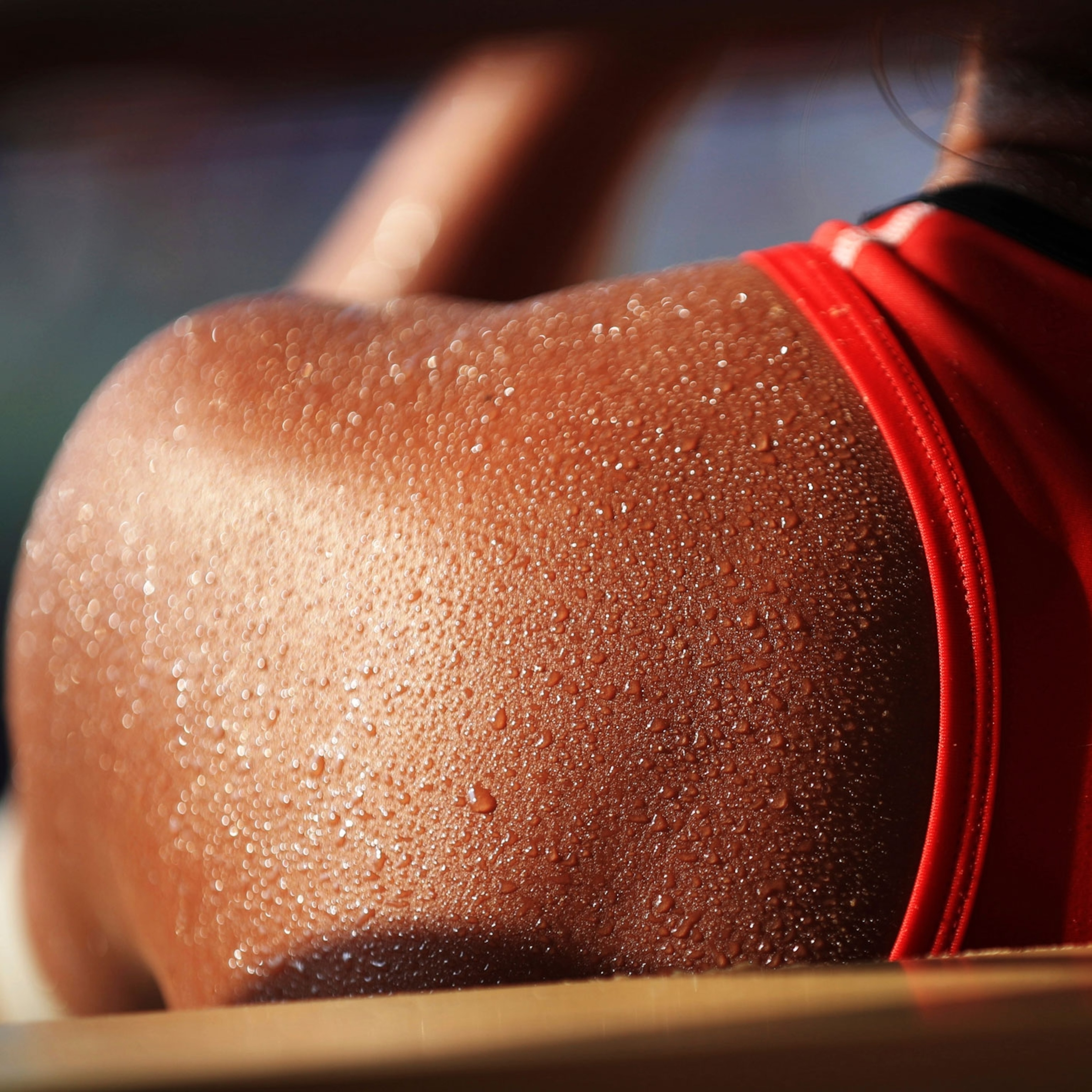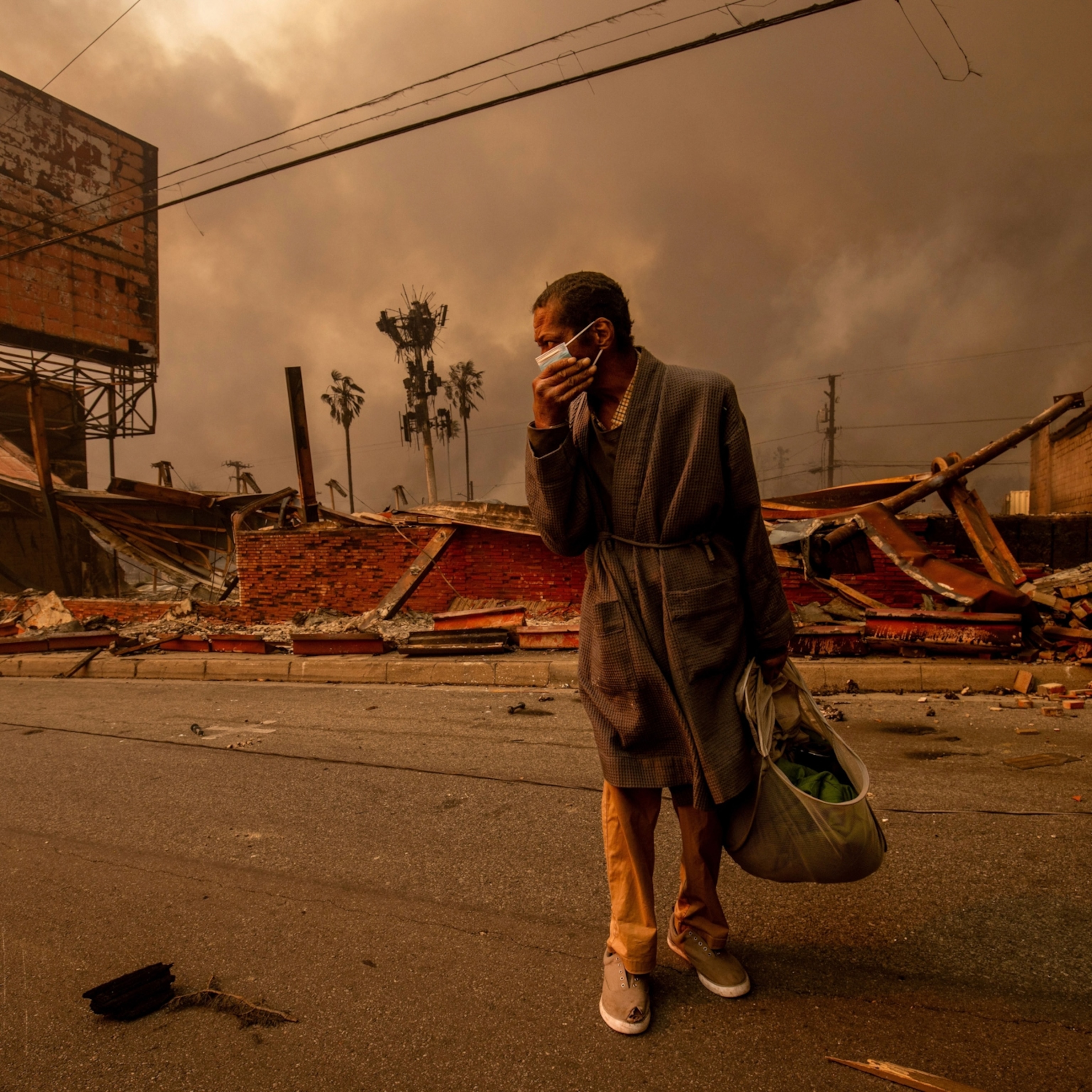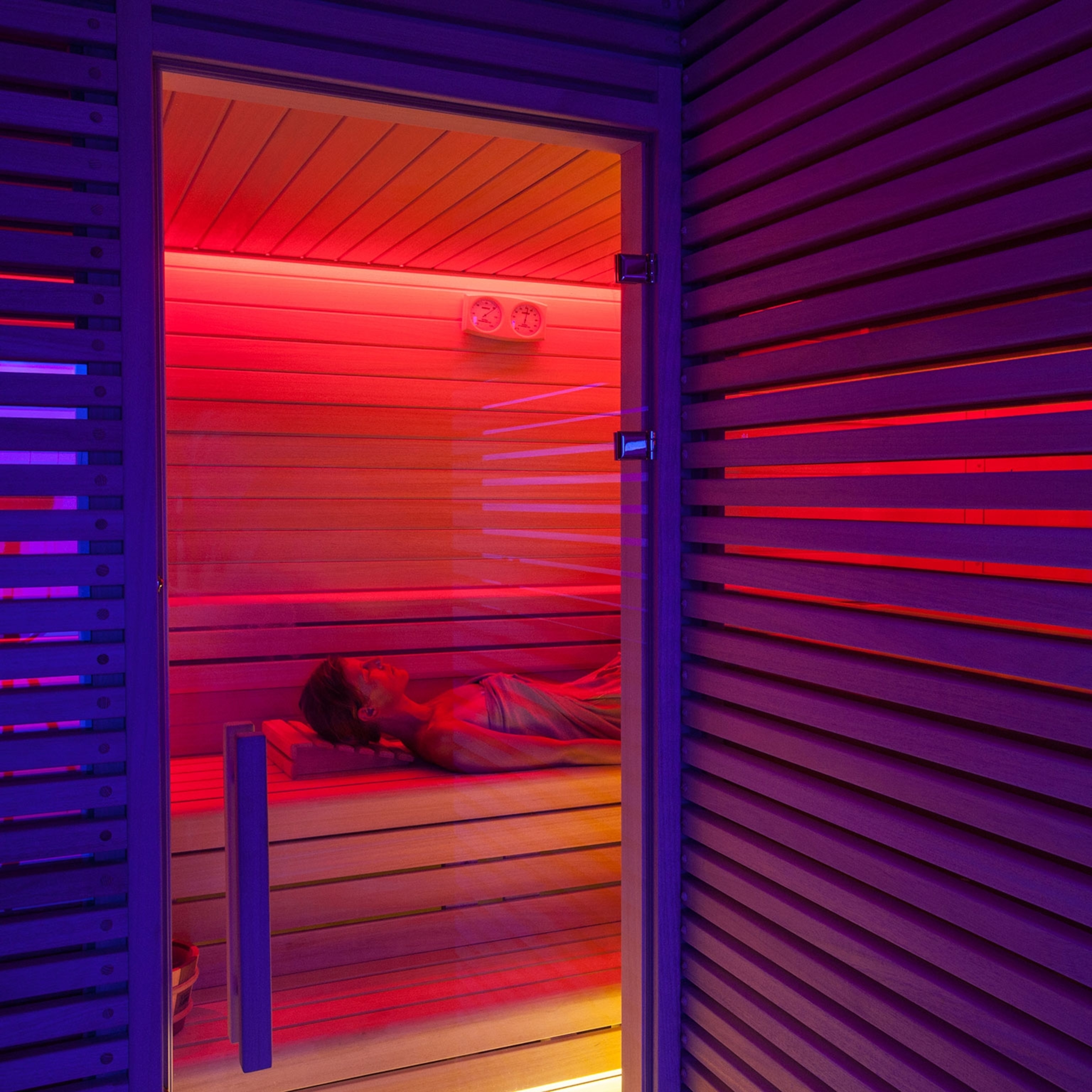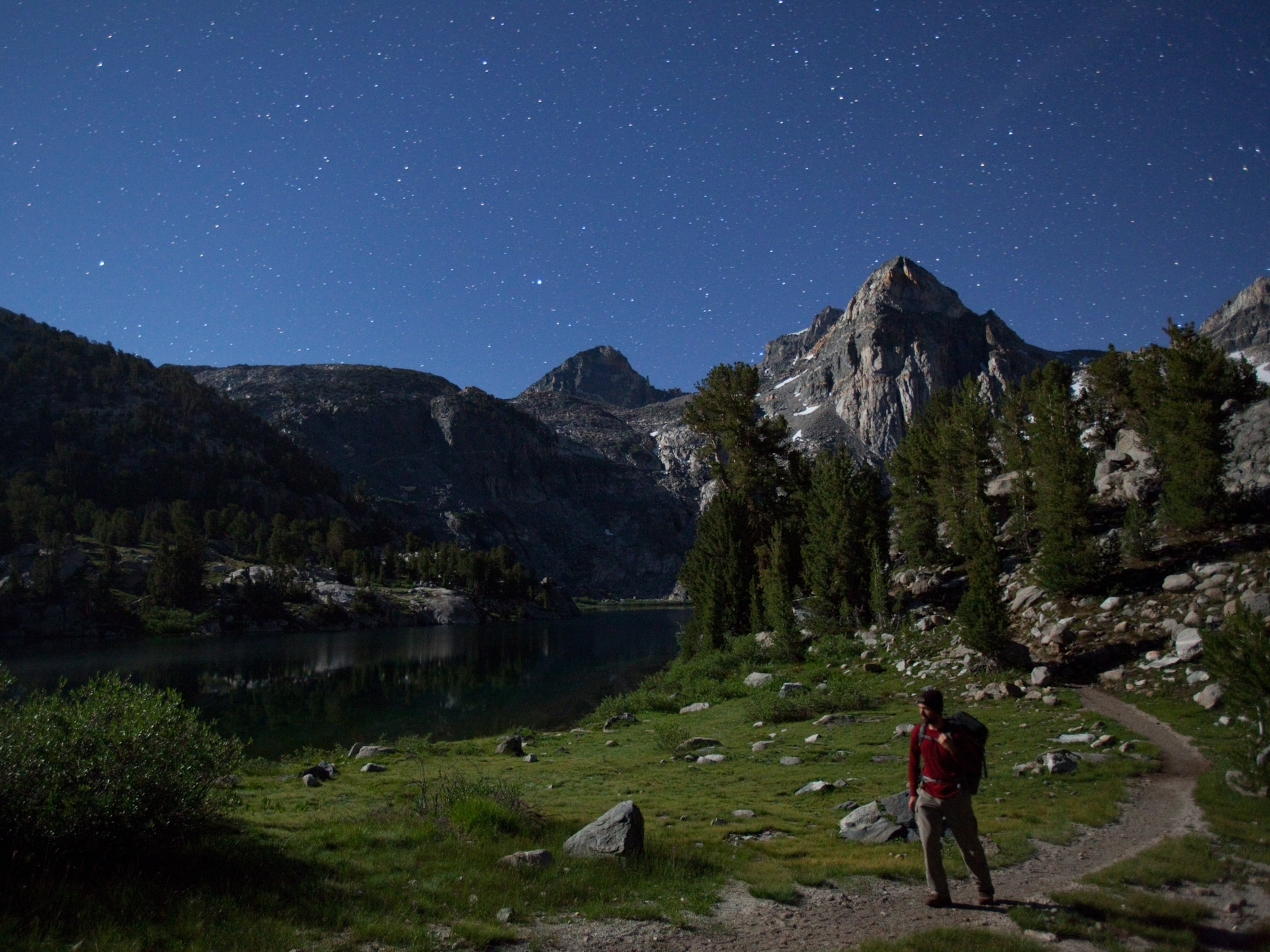
How heat can make you sick—and kill you
Heat waves worldwide are becoming more frequent and are lasting longer, yet many people brush off the dangers. Here’s how extreme heat affects us—and what to keep in mind to stay safe.
Last summer as a searing heat wave rolled in, the Spanish city of Seville did something unexpected. Officials treated the three-day heat event as they might a hurricane or massive wildfire—they named it. The coming of Heat Wave Zoe triggered public service announcements urging precautions to avoid dehydration, heat exhaustion, heat stroke—and death.
Naming a heat wave is part of a recent effort to bring attention to the physical and mental-health dangers of extreme heat. Each year, grueling temperatures kill more people than other weather conditions, both in the U.S. and globally. Last summer, for example, hundreds died during the four-day broiler in the Pacific Northwest. More attention might persuade people not to ignore the heat—staying outside or continuing exercising al fresco.
“When the news cameras turn up after a hurricane or tornado, the damage is evident. But heat’s effects are mostly hidden,” says Kurt Shickman, director of the extreme heat initiative at the Adrienne Arsht-Rockefeller Foundation Resilience Center, the organization helping Seville as well as Miami, Kansas City, Los Angeles, Athens, and others.
Recognition of heat’s damaging effects has become more urgent with climate change, which is leading to more frequent and longer heat waves worldwide. That awareness is particularly important now as above-normal temperatures are predicted for much of the U.S. this summer. “Bringing more attention to heat is part of our climate resilience strategy,” says Miami-Dade County Mayor Daniella Levine Cava. The recent heat wave in India, for example, was made 30 times more likely by climate change.
Official estimates say an average of 700 Americans die annually from extreme heat, but experts call that a gross undercount. Many people succumb to a heart attack, asthma, or kidney disease exacerbated by heat whose death certificates don’t reflect the weather’s contribution. Even accidents might be tied to heat. “Maybe an outdoor worker falls off a ladder because the heat made them dizzy,” says Jane Gilbert, the chief heat officer of Miami-Dade—one of a handful of people in the country with this title. Deaths from heat are likely to increase as the Earth‘s temperature rises.
How heat can make us sick—and snarky
Dehydration, muscle cramps, heat exhaustion and, most seriously, heat stroke are all direct consequences of a body overcome by heat. A review last year calculated that every one-degree Celsius rise in air temperature above a local baseline increases heat-related illnesses by 18 percent.
Even seemingly disparate conditions can be exacerbated by heat. Emergency room visits increase for urinary tract infections and kidney stones during very hot days, for instance.
Mental health problems including psychological distress and suicide are also tied to hotter temperatures, says Craig A. Anderson, a psychologist who studies the issue at Iowa State University. This was recently documented when scientists examining hospital data across the country found more people head to the hospital with anxiety and schizophrenia when the thermometer spikes.
Aggression and violence also rise, Anderson has found. It may be that people get irritable when they are uncomfortable, but the link might be more biological, he says. Adrenaline and other chemicals increase in a hot body, which “can lead to more impulsive behavior,” he says. Heat also makes people grouchy. Negative comments on Twitter double in sweltering weather, according to an analysis of 6 billion global tweets.
Yet most people brush off the risk. When researchers asked residents of Greece to rank the climate-related hazards that worried them, heat came last—far behind earthquakes, wildfire, floods, and even frost. And fully a quarter of the people in Spain surveyed before the Seville outreach program stated they personally didn’t need to worry if a heat wave strikes, according to unpublished data shared with National Geographic.
Local initiatives are starting to help
When heat strikes, some municipalities have traditionally taken small actions, like opening libraries or other cooling centers for people without air conditioning. But they’ve rarely viewed heat as seriously as other weather disasters, something a growing number of local governments are starting to change. The federal government is also trying to raise the profile of dangerous heat events. Last year it launched a website—heat.gov—to provide forecasts and safety education.
Miami-Dade’s education campaign began by declaring May through November as “heat season,” with ads on television, radio, and billboards—in English, Spanish, and Haitian Creole. Such an effort is essential in an area where the number of days over 90 degrees has increased by more than 50 percent in the last half-century, Levine Cava says. “The rise has been gradual, so people don’t recognize how deadly heat actually is,” she says.
The county’s heat action plan also includes creating more tree canopies, mandating reflective, cooler roofs on new commercial developments, and financially helping residents afford air conditioners (or higher-efficiency units), among other things.
Ranking heat waves
Part of the problem with communicating the dangers of heat is that current definitions don’t capture all the risks. For example, the U.S. National Weather Service issues a heat advisory for Miami-Dade at a higher heat index (a combination of temperature and humidity) than when deaths occur, Gilbert says. The county is working with the NWS to pilot a lower threshold.
Including factors beyond the temperature high and humidity level is also important, Shickman says. Health is most seriously impacted when the temperature doesn’t dip enough at night to allow the body to recover before the noon sun bakes it again. “Most of the highest correlations between heat and negative health outcomes happen when you have high nighttime temperatures, not the highest daytime temperatures,” he says.
One Arsht-Rock pilot program aims to sort heat waves into categories. In Seville, for example, the highest categories are reserved for times when daily average temperatures (which takes nighttime numbers into account) are forecast to spike especially high for three or more days at a time people’s bodies are not as acclimated because it wasn’t as hot in prior weeks. These parameters were determined by correlating weather with excess summer deaths in the past 25 years, says José María Martín-Olalla, a physics professor at the University of Seville who is involved in that city’s efforts. Levels four and five trigger enhanced warnings to the public, with level five heat waves named, as the one was last July.
The Seville experience is proving that increasing heat’s visibility makes a difference. According to the unpublished interim data, people who noticed the social media campaign were more likely to stay indoors, work from home, and drink more water during Heat Wave Zoe than those who didn’t. And they were 15 percent more likely to agree that heat warrants changing behavior.
Heat exacerbates health disparities
Anyone who spends time in the sun can be affected when the heat rolls in, but some people are especially vulnerable. This primarily includes children, the elderly, and people plagued by poverty, according to U.S. Global Change Research Program, the federal agency charged with understanding climate change’s effects.
People with low incomes are impacted in a number of ways: they may not have air conditioning (or be able to afford the electric bill if they turn it on), have higher rates of medical conditions exacerbated by heat such as kidney and respiratory diseases, and live in neighborhoods with fewer trees. When Miami-Dade County mapped the heat vulnerability in its communities, 14 lower-income neighborhoods had higher land surface temperatures than those around it, a phenomenon known as an urban heat island effect.
Others at higher risk: outdoor workers whose employers may not make accommodations during extremely high temperatures, athletes who train outdoors, people on medications—including beta blockers and antihistamines—that reduce their ability to regulate heat, pregnant women, and homeless people.
How to reduce health risks of extreme heat
To minimize health problems when extreme heat strikes, it’s important to limit outdoor activities, especially during the hottest part of the day, says Elizabeth Gardner, a sports medicine physician at the Yale School of Medicine. Wear thin, light-colored clothing to enhance sweat evaporation, the prime way the body cools itself. And sip water throughout the day, rather than gulping large amounts less often, because the body can’t absorb enough that way, she says.
Once someone starts overheating, fast action is crucial. Symptoms of heat exhaustion include dizziness, muscle cramps, clammy skin, and weakness, among others. At that point, get to a cooler spot, quickly hydrate with water or, preferably, a beverage with electrolytes, and remove extra clothing preventing sweat’s evaporation. Because a person’s mental status can be altered by heat exhaustion, it’s important to check on those who live alone to be sure they’re not experiencing this, Shickman says.
If not reversed, heat exhaustion can quickly turn to heat stroke, where skin turns warm and red, the heart rate quickens, organs begin to fail, and consciousness is lost. This is an emergency that can lead to death if medical treatment is not administered.
The most important message heat experts hope people absorb this summer is that heat is a formidable opponent. “Pushing through extreme heat by exercising or staying outside too long is not a safe thing to do,” Gardner says. “It can bring you to the point of danger.”
Readers, did this article help you understand the seriousness of protecting yourself from the heat? Do you think you'd change any habits because of it? Let us know.







